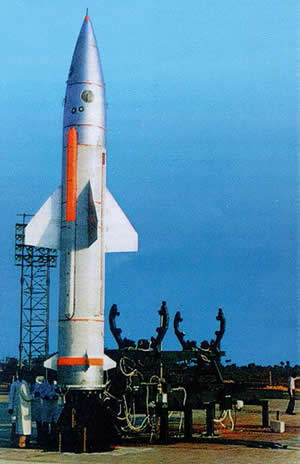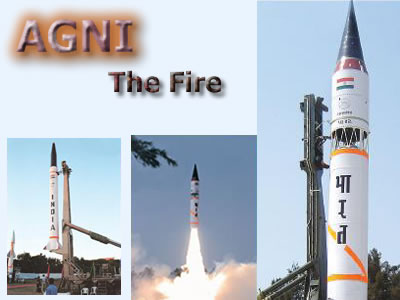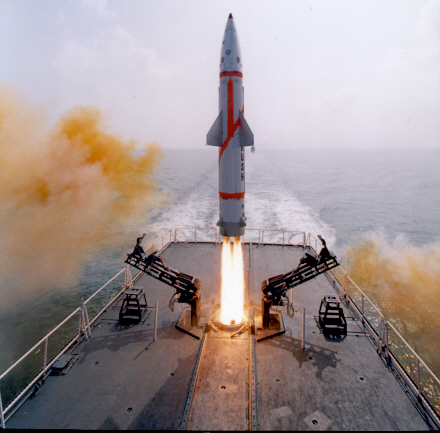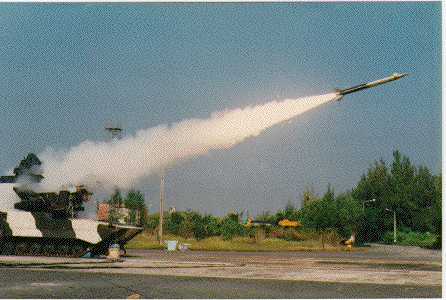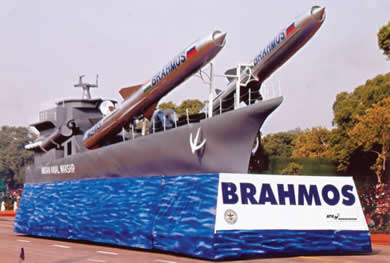INDIAN Missiles
Integrated Missile Development Program
Integrated Guided Missile Development Programme (IGMDP) was sanctioned in 1983 for design, development and productionisation of different types of stateof- the-art missiles to provide self-reliance in this field of high technology.The idea of IGMDP was conceived by renowned scientist Dr. A P J Abdul Kalam to enable India attain self-sufficiency in the field of missile technology. Dr. Kalam, the then Director of Defence Research & Development Laboratory (DRDL), headed a Missile Study Team to weigh the feasibility of the programme. The team included members from the Defence Research and Development Organisation (DRDO), the Army, Navy and Air Force, and Defence Production. Keeping in mind the requirements of various types of missiles by the defence forces, the team recommended development of five missile systems - Prithvi, Trishul, Akash and Nag. In addition, development of Dhanush, Agni, BrahMos and Astra series of missiles have also been taken up. The status of various missiles is as under:
Prithvi Missile
|
Surface-to-surface missile, Prithvi, a tactical battlefield missile, has two versions of ranges 150 km and 250 km with about 1 tonne and 500 kg payloads, respectively. Both versions have been inducted into Armed Forces.
On April 29, 2003, India tested the short-range nuclear capable Prithvi missile from Chandipur in the eastern Orissa State.
On March 19, 2004, India successfully fire-tested an extended version of the medium-range surface-to-surface missile `Prithvi` from the Integrated Test Range (ITR) at Chandipur-on-sea, about 13 kms from Balasore in the Eastern Indian State of Orissa. The extended version has been developed for Indian Air Force (0AF) and was reportedly test fired from a mobile launcher at about 10:10 a.m. (local time) from the ITR.
On Octover 27, 2004, India flight-tested the Prithvi III, its most sophisticated medium range surface-to-surface missile and capable of carrying nuclear warheads within a range of up to 300 kms at Chandipur-on-sea. The 8.5-meter-high and one-meter-thick missile, was fired at 11:29 p.m. (local time), and has a range of 250-300 kilometers. The missiled uses a two-stage propellant, both solid and liquid.
|
AGNI - I III III
|
Many Milestones in The Never Ending Journey.
|
Agni-I Missile: With a range of 700 km, surface-to-surface Agni-I missile has single stage solid rocket motor and can carry one tonne warhead. It can be configured to fire from road/ mobile launcher. With the development of Agni-I, the range gap between Prithvi-II and Agni-II has been bridged. AgniÐI has been inducted in to Services. Training launch of Agni-I has been successfully carried out on October 5, 2007.
Agni-II Missile: The range for Agni-II is more than 2000 km. The salient features of the test firings are mobile launch capability, multi-staging, state-of-the-art control and guidance, re-entry technology and sophisticated on-board packages including advanced communication. AgniÐII has also been inducted in to Services.
Agni-III Missile: Agni-III is a longrange missile with a capability to launch from rail mobile launcher. It has a capacity to carry 1500 Kg warhead. Agni-III has been successfully test fired on April 12, 2007.With a range of more than 3,000km (1,865 miles), the missile could hit targets as far off as Beijing and Shanghai, analysts say. The Agni-III is India's most sophisticated long-range missile. It was successfully test-fired last year. The first attempt to test the missile in July 2006 failed after it developed a snag during the flight and came crashing down into the Bay of Bengal. The missile was re-configured for the second launch in April 2007.
|
Dhanush Missile
|
Dhanush Missile: It is a Naval version of Prithvi missile with a range of 250 km and a payload of about 500 Kg. It can carry both conventional as well as non-conventional warheads. Weaponisation of INS Subhadra has been completed. Acceptance test firing from INS Subhadra was undertaken successfully on March 30, 2007 by the Naval team. All mission objectives including extended range of 350 Km were met.
|
Thrishul Missile
|
Trishul Missile:
Trishul is a Quick Reaction Surface to Air Missile. It can also be used as an anti-sea skimmer from a ship against low flying attacking missiles. It employs dual thrust propulsion stage using high-energy solid propellant in a maraging steel flow chamber, and is operated on command guidance initially with ka-band gathering and then transferred to the tracking radar. It has necessary electronic counter-counter measures against all known aircraft jammers.
Trishul, with its quickest reaction time, high frequency operation, high manoeuverability, high lethal capability and multi-roles for three services, is state-of-the-art system providing considerable advantage to the Armed forces. This system has gone through development flight trials for army and sea skimmer trials for navy. The final evaluation is in progress before user trials. |
Akash & Nag Misslies
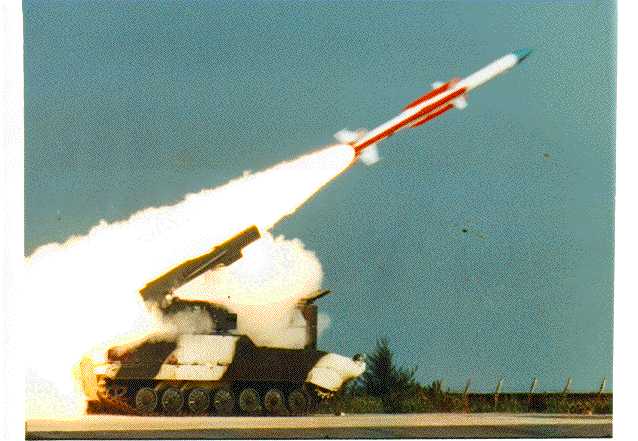
|
Akash Missile : .Medium range (25 Km), surface-to-air missile, Akash System is a medium range Surface to Air Missile with multitarget engagement capability. It uses high-energy solid propellant for the booster and ram-rocket propulsion for the sustainer phase. The propulsion system provides higher level of energy with minimum mass, compared to conventional solid/liquid rocket motor, that has better performance with minimum weight of the missile. It has a dual mode guidance, initially on command mode from a phased array radar and later radar homing guidance with unique software developed for high accuracy. The phased array radar provides capability for multiple target tracking and simultaneous deployment of missiles to attack four targets at the same time, in each battery. Multiple batteries constitute a group centre. The system is highly mobile and has gone through a number of flight trials providing the command guidance. Mobility trials of Akash weapon system and User training has also been completed. Performance trial of one group and two guided weapon battery testing has been completed as Phase-I of User trials. T-72 based Battery Level Radar, Battery Control Center and Akash self-propelled launcher have been realized, integrated and functional tests have been completed.Akash missile system is scheduled to be inducted in 2012
Nag Missile: Nag is a third generation anti-tank missile with "top-attack" and "fire and forget" capability. One flight test in operational configuration has been undertaken successfully. Nag Tandem warhead User trial has been completed. Phase-I of User trial has also been completed. Post flight analysis has been completed and action points are being implemented. |
BrahMos Supersonic Cruise Missile
|
BrahMos Supersonic Cruise Missile: BrahMos (a Joint Venture with Russia) is the best in the family of cruise missiles. It has supersonic speed with a range of 290 km and high level of performance. Development of the missile started in July 1999. After completing the development, fourteen flight tests have been carried out including the combat firing, with 100% success rate from land and sea against ship and land targets. The flight tests also demonstrated the indigenously developed Fire Control System. Indian Navy has inducted the system in their ships. The first batch of land version of BrahMos missile systems including advanced Fire Control System, Launch Complex, and Mobile Command Post have already been handed over to the Army. Development of air version and its interface with different types of aircrafts is in progress. |

